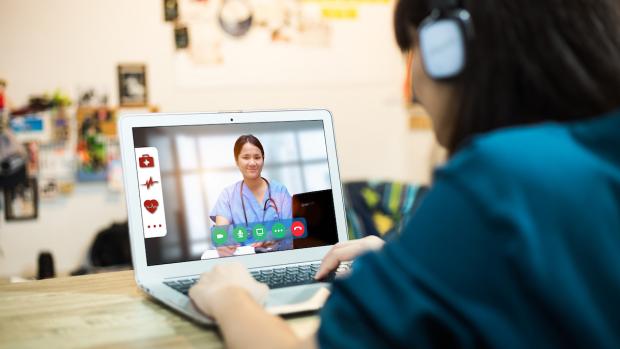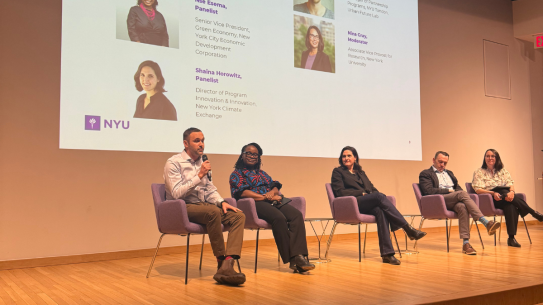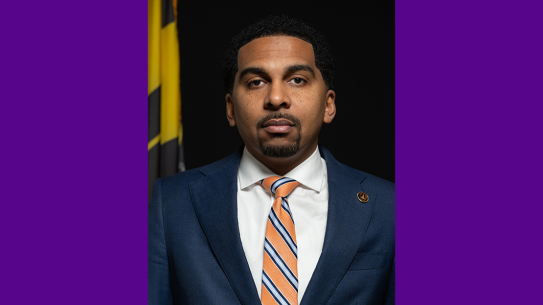Telemedicine transforms response to COVID-19 pandemic in disease epicenter
Study shows how virtual urgent care appointments increased by more than 600 percent, signaling a possible long-term shift in healthcare delivery

BROOKLYN, New York, Friday, May 1, 2020 – A rapid increase in “virtual” visits during the COVID-19 pandemic could transform the way physicians provide care in the United States going forward, according to a new study led by researchers from NYU Grossman School of Medicine and the NYU Tandon School of Engineering.
The findings, published this week in the Journal of the American Medical Informatics Association, capture the largest experience to date of the speed, scale and rapid expansion of video-enabled visits by patients and providers in varied and diverse settings. Specifically, between March 2 and April 14, 2020, virtual urgent care visits at NYU Langone Health grew by 683 percent and non-urgent virtual care visits grew by an unprecedented 4,345 percent in response to COVID-19, in daily averages.
Oded Nov, professor and chair of the Department of Technology Management and Innovation at the NYU Tandon School of Engineering, and Devin Mann, associate professor in the Departments of Population Health and Medicine at NYU Grossman School of Medicine and senior director for Informatics Innovation and Medical Center Information Technology at NYU Langone Health were the study’s senior and lead authors, respectively.
“Through this massive expansion, the numbers of providers and patients who experienced telemedicine for the first time increased dramatically, facilitating transformation of technologies and work practices across multiple medical specialties,” said Nov. “An important question going forward is how much this will continue beyond the COVID pandemic. While we expect patients and providers who got a crash course in telemedicine to continue using it long term, regulators and insurers' decisions will have a major impact."
“The pandemic created an urgent need to divert patients from in-patient care and prevent the flooding of our emergency rooms beyond capacity,” said Mann. “Through telemedicine, we pushed the frontlines to locations far from our hospitals and doctor’s offices. And because NYU Langone invested early in this technology, we quickly leveraged digital health to help hundreds of thousands of patients.”
In recent years, telemedicine’s growth has been incremental, utilized by only eight percent of Americans in 2019, according to the researchers. Outside of rural medicine and prior to COVID-19, there were few compelling reasons to replace in-person care. In order to facilitate the rapid expansion in telemedicine captured in this study, U.S. insurers expanded coverage to include all telemedicine visit types, including from home, and states relaxed licensing requirements so that care could be delivered across state lines. Additionally, the U.S. Department of Health and Human Services allowed the use of consumer audio and video communication for telemedicine visits.
Responding to a Pandemic: Study Findings
Using NYU Langone’s enterprise electronic health record system Epic, the researchers captured COVID-related visits using diagnostic codes containing relevant respiratory issues and matched them with keywords describing symptoms including fever, shortness of breath, cough, and more.
Over a six-week period, the investigators found:
- There were 144,940 video visits conducted involving 115,789 unique patients and 2,656 unique providers.
- Of all virtual visits, 56.2 percent of urgent care and 17.6 percent of non-urgent visits were COVID-19-related.
- The increase in telemedicine urgent care was enabled by a rapid increase in urgent care providers. A pool of 40 emergency medicine providers, managing fewer than 100 visits on a typical day, grew to 289 “surge” providers from multiple specialties.
- On March 19, NYU Langone Health expanded video visits to all of its ambulatory care settings, reaching more than 7,000 visits within 10 days and representing more than 70 percent of total ambulatory care volume during this time.
- Telemedicine usage was highest by patients aged 20 to 44 years, particularly for urgent care. However, patients of all ages were able to use the technology across NYU Langone’s telemedicine platform.
- Patients’ satisfaction ratings with telemedicine visits remained positive, despite the rapid expansion of the program to thousands of new providers.
“Our ability to scale and expand telehealth quickly has allowed us to battle overcrowding and human spread of the disease,” said Paul A. Testa, MD, assistant professor, the Ronald O. Perelman Department of Emergency Medicine and Chief Medical Information Officer at NYU Langone Health, and a study co-author. “It also pushes our ability to care for patients beyond any physical boundary, which you can only do digitally.”
Rumi Chunara, assistant professor of biostatistics at the NYU School of Global Public Health and an assistant professor of computer science and engineering at NYU Tandon and Ji Chen, a master’s student at the NYU Grossman School of Medicine, were co-authors of the study, funding for which was provided by the National Science Foundation
About the New York University Tandon School of Engineering
The NYU Tandon School of Engineering dates to 1854, the founding date for both the New York University School of Civil Engineering and Architecture and the Brooklyn Collegiate and Polytechnic Institute (widely known as Brooklyn Poly). A January 2014 merger created a comprehensive school of education and research in engineering and applied sciences, rooted in a tradition of invention and entrepreneurship and dedicated to furthering technology in service to society. In addition to its main location in Brooklyn, NYU Tandon collaborates with other schools within NYU, one of the country’s foremost private research universities, and is closely connected to engineering programs at NYU Abu Dhabi and NYU Shanghai. It operates Future Labs focused on start-up businesses in downtown Manhattan and Brooklyn and an award-winning online graduate program. For more information, visit engineering.nyu.edu.




